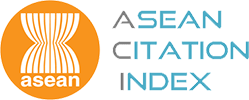Buoyancy Estimates of Malaysia's Tax System 1961 – 1998
Abstract
Several criteria are used to determine a 'good tax system' and they include administrative feasibility, ensuring burden of tax is spread fairly among taxpayers and tax buoyancy. Tax buoyancy measures the responsiveness of tax revenue to income growth. Previous studies have assumed a constant buoyancy estimate for the period under study and hence applied a double-log tax model (Mansfield, 1972; Choudhry, 1975; Byrne, 1983). In practice, however, tax buoyancies may change over time due to inflation, changing tax bases, improved tax administration and stricter enforcement of tax law by revenue authorities. This study uses the Box-Cox tax model which allows the determination of inter-temporal tax buoyancies for the period 1961-1998. The results obtained revealed a steady decline in buoyancy estimates of less than one for both direct and indirect taxes implying inefficiencies in the tax system. Suggestions are made to revamp the current tax system by integrating existing indirect taxes such as sales and service tax into a single broad-based consumption tax.Downloads
Download data is not yet available.
Additional Files
Published
01-12-2000
How to Cite
Kasipillai, J., & Mohd. Mustafa, M. (2000). Buoyancy Estimates of Malaysia’s Tax System 1961 – 1998. Malaysian Management Journal, 4(1&2), 75–87. Retrieved from https://e-journal.uum.edu.my/index.php/mmj/article/view/8580
Issue
Section
Articles









